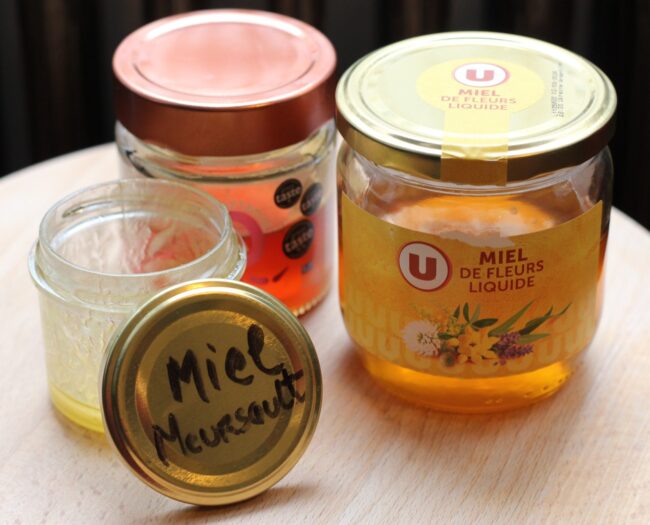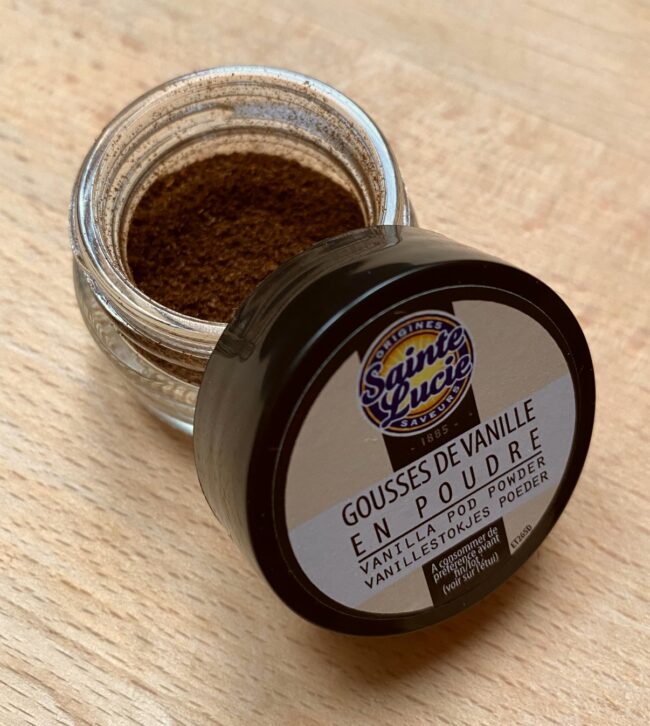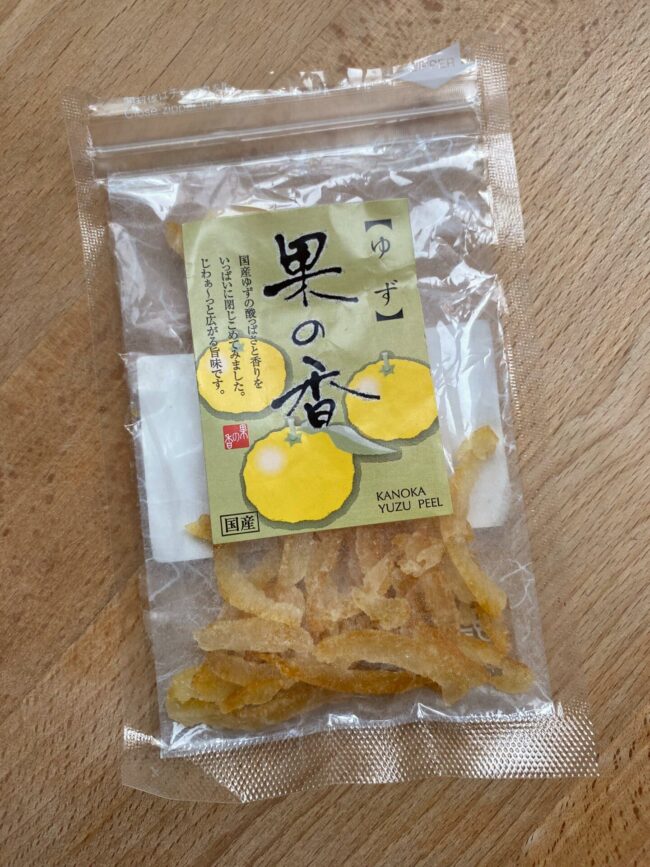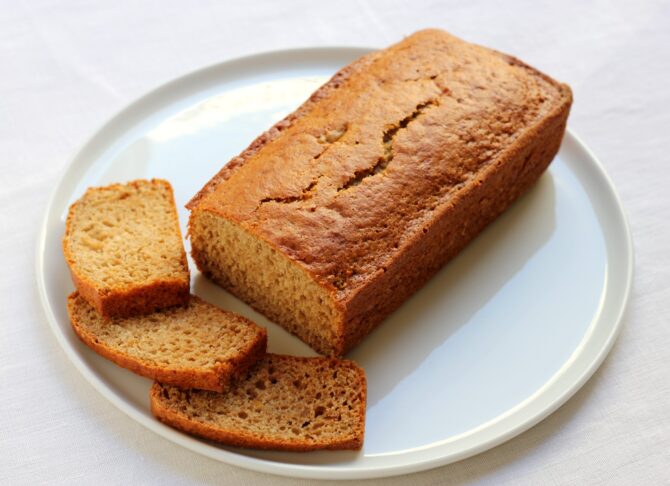French Holiday Recipe: Honey and Spice Cake
- SUBSCRIBE
- ALREADY SUBSCRIBED?
BECOME A BONJOUR PARIS MEMBER
Gain full access to our collection of over 5,000 articles and bring the City of Light into your life. Just 60 USD per year.
Find out why you should become a member here.
Sign in
Fill in your credentials below.
Nothing evokes winter in France like the warm, sweet fragrance of pain d’épices, or honey and spice cake. The same way gingerbread is a staple of English-speaking homes during the holidays, pain d’épices fills the role of comfort food with its pliant texture and warming ingredients like honey and spices. Traditionally made with two types of flour, including rye, pain d’épices is delicious on its own, or as a base for savory holiday preparations like foie gras.
Honey-infused breads and cakes have been around for ages, literally: they were crafted by the ancient Egyptians, the Romans, and in 10th-century China. But it wasn’t until the Crusades of the Middle Ages that cakes made with honey and spices became widely available in Europe. Then suddenly they were everywhere.
The recipe and spices first traveled to Germany, then to Alsace. By then a tradition around Christmas, the cake became so well-established in Reims, the capital of Champagne, that it was crafted by maîtres pain d’épiciers, or masters. Henri IV honored them with the status of official guild in 1596, and by the 17th century, Reims was the undisputed capital of honey and spice cake.
But by the 18th century, the competition ramped up: Alsace was still in the running, but Dijon arrived on the stage with a version of the cake that didn’t include any rye flour. Even Nicolas Stohrer, famous pastry chef to the court at Versailles, was a master, or maître pain d’épicier.
Over the years, I’ve started baking pain d’épices several times during the holidays: it fills the entire apartment with the redolent odor of honey and spices, and my Parisian neighbors even come knocking to ask what I’m baking.

A friend in Burgundy gave me this little pot of golden miel from Meursault last summer. I save it for infusions or herbal tea and use basic supermarket honey for the cake recipe. Photo: Allison Zinder
The best thing about pain d’épices is that it’s so versatile. The recipe that follows is an all-purpose one which I recommend making as-is the first time. When you make it again, you can opt to take the recipe in either direction, as follows.
To use this “cake” more as a bread, for savory preparations, keep it medium in tone by using the quantities of spices given in the recipe, or even by dialing them down. Thin slices of pain d’épices topped with your favorite foie gras terrine make a lovely apéro plate to pass around to your holiday guests. Reducing the number of spices and the quantities will ensure the cake doesn’t overwhelm the finesse of the foie gras. It will rather complement it, as will a glass of white wine from the Côteaux du Layon or Sauternes.

Vanilla. Photo: Allison Zinder
At the other end of the scale, you can play around with the spices if you’re baking pain d’épices to eat as is, or to use it more creatively: layer it into a cake with icing in between or topped with a favorite fruit glaze. You can increase the spices or add different ones. I’ve often used juniper berries, vanilla, or grated tonka beans (buy them next time you’re in France!), and this year, I’ve added chopped yuzu peel to great acclaim from my family.

Yuzu peel. Photo: Allison Zinder
This recipe is quick to put together, a boon for harried holiday cooks with numerous dishes to make. Also, you don’t need fancy honey to make this cake. Though I like to keep around rarer kinds of honey, I save that for a simple cup of herbal tea before bed. Why? Because applying heat to ingredients tends to denature them; their initial essence can be lost in translation. I use a very basic one from my local supermarket which works really well.
Honey and Spice Cake
Ingredients:
½ cup (110 ml) whole milk
½ cup (170 g) honey
1/8 teaspoon cinnamon
1 whole clove
1 star anise
¼ teaspoon ground ginger
¼ teaspoon allspice
¼ teaspoon nutmeg
¼ teaspoon ground coriander
other spices of your choice
¾ cup (90 g) rye flour
¾ cup (90 g) all-purpose flour
2 pinches fine sea salt
2¾ teaspoons (12 g) baking powder
Butter and flour for greasing the cake tin
2 eggs, room temperature
3 tablespoons (35 g) sugar
Special equipment: a rectangular 9 x 5-inch (23 x 13 cm) loaf pan or cake tin
How to make it:
- In a small saucepan, heat the milk over medium heat. Just before it boils, remove it from the heat.
- Add the honey, stirring well with a whisk. If the milk separates slightly, that’s okay.
- Add all the spices to the milk-honey mixture and cover. Let it sit for 20 minutes, then strain. Let the mixture cool completely.
- Preheat the oven to 350°F (180°C).
- In a medium bowl, whisk together the rye flour, flour, salt, and baking powder.
- Grease the loaf pan or cake tin, then sprinkle it with flour all around, tapping the pan upside down to get rid of excess flour.
- In a medium bowl, beat the eggs and sugar together using a sturdy wire whisk or a hand-held beater. Beat together vigorously until pale and fluffy, about 3 minutes.
- Add the cooled milk-honey mixture to the eggs and sugar, stirring to combine.
- Finally, add the flour mixture and stir quickly to combine.
- Turn the mixture into the pan or tin and bake in the middle of the oven for about 35-40 minutes, or until a knife poked into the middle of the cake comes out clean.
- Remove the cake from the oven, and let it cool for about 5 minutes in the pan.
- Transfer the cake to a wire rack. Once it’s completely cool, store at room temperature under a tea towel or wrapped in parchment paper.
Honey and spice cake is best not straight from the oven, but 1-2 days after baking. The honey acts as a natural preservative and helps develop more flavor over time. If you plan on keeping it around for a few days, you may want to wrap it in plastic film to prevent it from drying out.
makes one 9 x 5-inch (23 x 13-cm) cake
Lead photo credit : Pain d’épices. Photo credit: Allison Zinder
More in Christmas in France, gingerbread, pain d’épices




